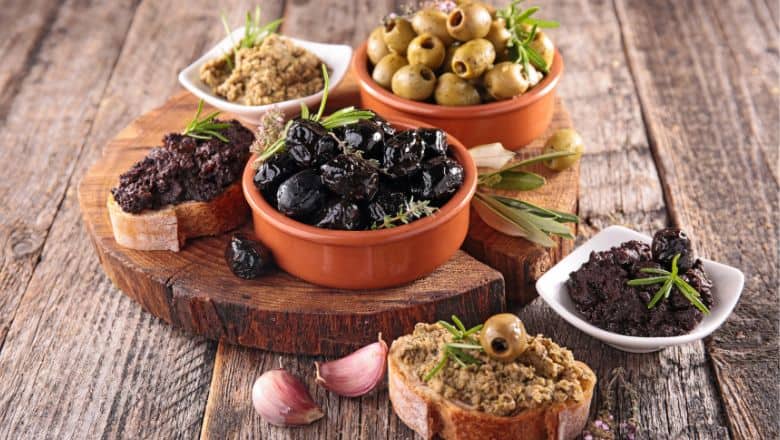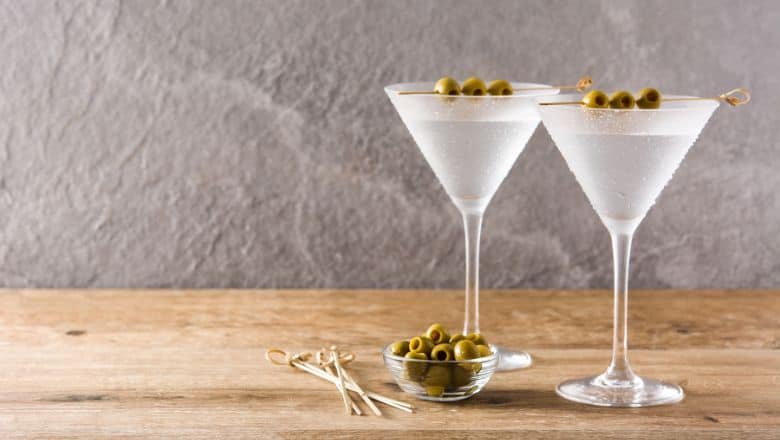5 Unusual Uses of Olives in Gourmet Cooking
Olive Knowledge is a part of Amazon Associates. As an Amazon Associate, we earn from qualifying purchases. Read our Affiliate Disclosure to learn more.
Olives are a popular addition to regular dishes – pizza, for example – but what I’m looking at here are 5 unusual uses of olives in gourmet cooking. Did you know that you can use olives in desserts? Or what about getting into molecular cooking, crazy as it may seem?
The simple fact is olives are far more versatile than you may realize, so let’s get started by looking at some olive-based sauces and condiments and the dishes that they may complement.
I’m sure you’ll be able to use some of the ways below to incorporate olives into your everyday diet.
1. Olive-Based Sauces and Condiments

I have a confession: I’m biased because I simply love Mediterranean food! The combination of flavors in even the simplest of dishes is just sublime. Where olives make a difference is in that extra zest.
We’re talking about olives in gourmet cooking, but that doesn’t mean it has to be complex. The simple olive sauce I’m about to introduce you to is one that can be made in a few minutes, and that can be used to enhance a wide choice of dishes.
Green Olive Sauce
This is a sauce for all occasions, and I recommend green Castelvetrano olives if you can get hold of them (fresh preferably, but in a jar otherwise.) You’ll also need pistachios, garlic, lemon and tarragon.
I’m not going to go deep into the details here, but what you need to do is wrap the olives in a tea towel, then crush them – I find a rolling pin does the job – and mix the ingredients to taste in a bowl. There you have it: a five-minute gourmet standard olive sauce.
Black Olive Sauce
Black olives are fully ripe and are widely used with tomatoes to make a delicious sauce that is great with pasta dishes. Once again, this is a simple sauce to make – most Italian-inspired sauces are – and there are many different examples.
I like a strong sauce with my pasta and recommend this recipe as the basis for your black olive sauce – a classic tapenade that will go down a treat with that alfresco meal and a glass of wine!
2. Olive in Molecular Cooking
What is molecular cooking, and how do olives fit in? Molecular gastronomy – to use the correct terminology – is about applying science to cooking methods, and it’s not as new as you may think. Books were written about the science of cooking back in the 1800s.
Think molecular cooking, and you think of Heston Blumenthal, the chef who really brought it to the mainstream with his now famous ‘snail porridge’ and other mad ideas.
The problem is it’s not easy, and unless you have some liquid nitrogen or oxygen canisters lying about, you’re not going get very far. How are olives used in molecular cooking?
One famous example of olives in molecular gastronomy is the ‘spherical olives’ dish, as presented by the great chef Ferran Adria at the legendary El Bulli restaurant in Spain. A quick look at the recipe will give you an idea of what is involved.
While I love the idea of doing things differently, the time and expense involved mean this isn’t something I’d try at home, but don’t let that stop you!
3. Olive in Desserts
Olives in desserts? Yes, indeed, and they can make a big difference to a simple dish. Olives have a bitter-sweet tang that contrasts neatly with super-sweet fruits such as strawberries.
Used in a recipe such as this wonderful strawberry sorbet, the olives are the final touch to what might have been quite ordinary. You may have to search to find dehydrated olives, but they’re out there, and any good delicatessen should stock them.
For chocolate lovers, what about an orange and black olive chocolate cake? I know that sounds a bit odd, but wait until you try it! The black olives are the perfect choice to partner the tangy orange and the wonderful chocolate – use dark for the best results – and this seemingly unusual creation really hits the spot.
These are just a couple of examples that prove the value of olives in sweet dishes. Next, we need to talk about cocktails.
4. Olive in Cocktails and Beverages

What is the classic cocktail that includes olives? It has to be the Dirty Martini, one of the simplest and yet most refreshing of all cocktails. Dry gin, vermouth, and green olives – that’s it, and it takes a few seconds of your time. If gin isn’t your thing, try it with vodka for an extra kick.
Olives are an essential cocktail bar, and a more unusual cocktail is the Fig and Olive. This is a taste not for everyone, but the two contrasting flavors do go together well, and it’s a favorite of mine. This gin cocktail uses olive oil for a smooth texture and is something of a newcomer to the drink world.
Before we move on, a welcome mention for something I have only recently discovered: Olive Leaf Tea. Made from dried olive leaves, this is a surprisingly enjoyable drink that is also packed with vitamins and antioxidants and makes a change from the norm.
5. Olive in Infused Oils and Butters
Our last section is about olives in infused oils and butter, and to be honest, I tend to experiment with crushed olives or oil and create my own. A classic of the genre is olive and garlic butter, which simply combines crushed garlic cloves or garlic powder with the olives for a fine garnish.
My favorite is this wonderful black olive butter that tastes simply stunning spread on crusty bread as the Greeks love to do and paired with a salad, salami, or pasta for perfection. Use unsalted butter for the best results.
